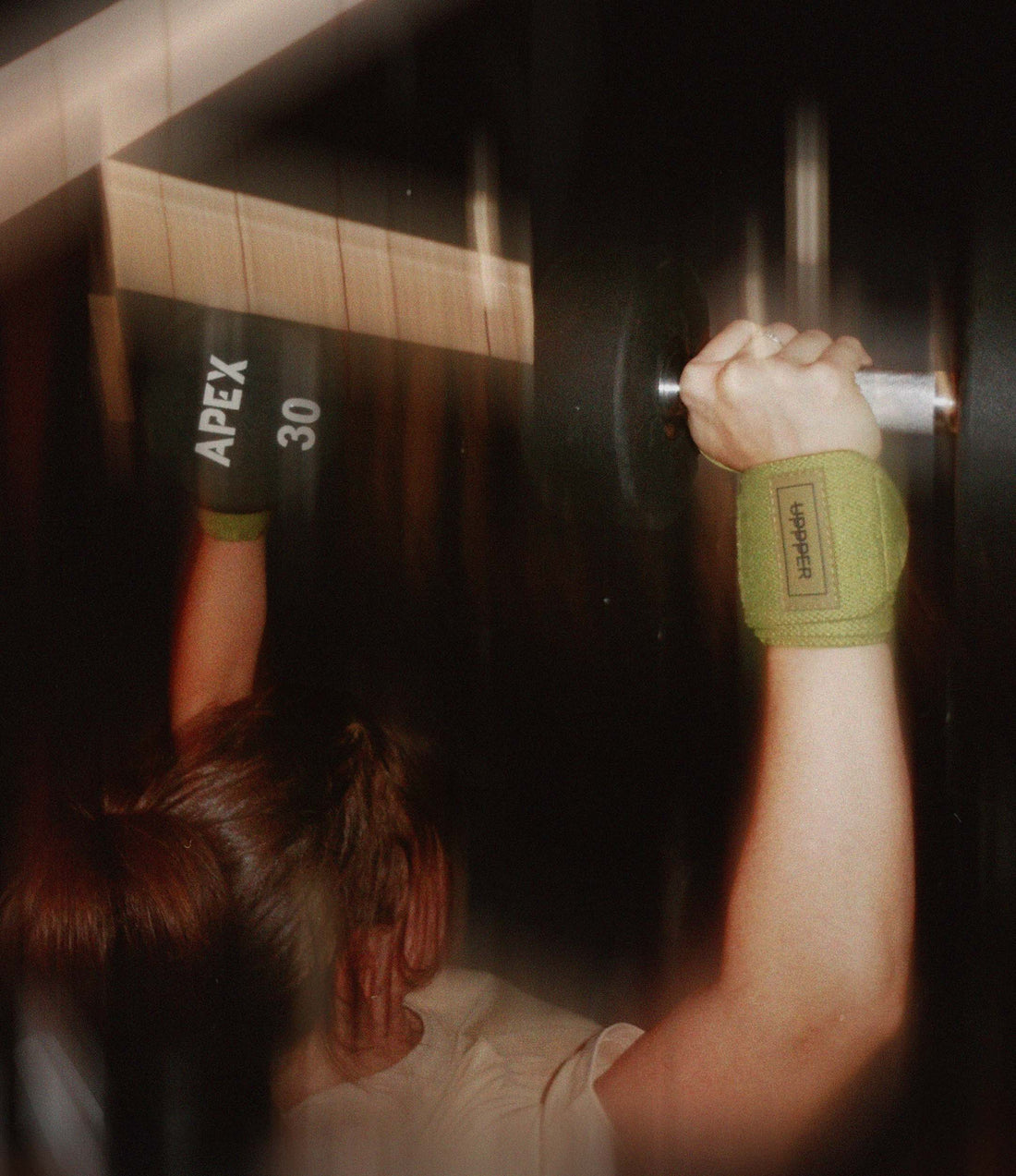The shoulder press (often called the overhead press) is one of the best moves for building strong, defined shoulders and a powerful upper body. It targets your deltoids, traps, triceps, and even your core for stability, making it a staple in strength training routines.
Whether you’re working out at the gym with a barbell or training at home, mastering the shoulder press can take your upper-body strength to the next level. In this guide, you’ll learn:
- How to do the barbell shoulder press with proper form
- Tips for safer, stronger pressing
- The most effective shoulder press variations to keep your workouts fresh and challenging
How To Do a Barbell Shoulder Press
The barbell shoulder press recruits more muscle fibers than dumbbells or kettlebells, making it ideal for building size and strength.
Here’s how to nail the movement step by step:
- Place a loaded barbell at chest level in a rack in front of you so you can pick it up comfortably.
- Stand straight with your feet shoulder-width apart and grab the bar with both hands in an overhand grip. Your hands should be around shoulder-width apart or at a distance that’s comfortable to you.
- Unrack the bar and place it over your shoulders, so that your elbows are pointing down and your palms facing forward while holding the weight.
- Keeping your back straight, begin the movement by pressing the weight up and overhead until you reach full arm extension without locking your elbows.
- Squeeze your muscles in this position, then slowly drive the bar back down to your shoulders.
Pro Tip: If you struggle with wrist pain during pressing, use wrist wraps for extra stability and support.
Shoulder Press Variations to Build Strength
Switching up your pressing routine helps you target muscles differently, avoid plateaus, and keep your workouts engaging.
Here are some of the best shoulder press variations:
1. Military Press
Feet together instead of shoulder-width apart. This tight stance forces your core to work harder to stabilize the weight.
How to do it: Perform the barbell press as usual, but keep your feet close together. Maintain balance and core tension throughout the lift.
2. Partial Press
Instead of extending fully overhead, stop partway through the lift. Great for hypertrophy or when recovering from injuries.
How to do it: Perform the shoulder press, but stop the bar at your chosen height (just over your head, at 90° elbow bend, etc.), then return to your shoulders.
3. Single-Arm Landmine Press
Perfect for unilateral strength and joint-friendly pressing. The angled bar path reduces strain on the shoulders.
How to do it:
- Place one end of a barbell in a landmine attachment (or corner).
- Get into a split stance and hold the bar with one hand at shoulder height.
- Press the bar up and forward until your arm is extended, then return under control.
- Switch sides.
4. Barbell Z Press
Done seated on the floor with legs straight, this removes leg drive and forces pure shoulder and core strength.
How to do it: Sit tall with legs extended. Unrack a barbell to shoulder height, press overhead, then slowly lower. Balance and posture are key.
5. Push Press
Adds power by using a small leg drive to help press heavier weights. Builds explosive strength.
How to do it: Perform a quarter squat, then drive through your legs while pressing the bar overhead. Control the weight as you bring it back down.
6. Dumbbell Shoulder Press
A more versatile variation that allows for a greater range of motion and joint-friendly pressing. Dumbbells also help fix strength imbalances between sides.
How to do it:
- Sit on a bench with back support or stand tall with dumbbells held at shoulder height, palms facing forward.
- Brace your core and press both dumbbells overhead until your arms are extended (don’t lock out).
- Slowly lower them back down to shoulder level and repeat.
FAQ
1. Is the shoulder press good for beginners?
Yes, we suggest starting with a dumbbell shoulder press and then moving on to more advanced variations.
2. What muscles does the shoulder press work?
Primarily the deltoids, with help from the triceps, traps, and core.
3. How often should I shoulder press?
1–2 times per week is plenty, depending on your overall training split.
Press Smarter With UPPPER
The shoulder press is demanding, not just on your shoulders but also on your wrists. That’s where UPPPER Wrist Wraps come in. Designed to stabilize your joints and keep your form locked in, they help you push through heavy presses, dumbbell work, and any other upper-body exercise that tests your grip and wrist strength.
Stronger presses. Safer training. That’s UPPPER.

